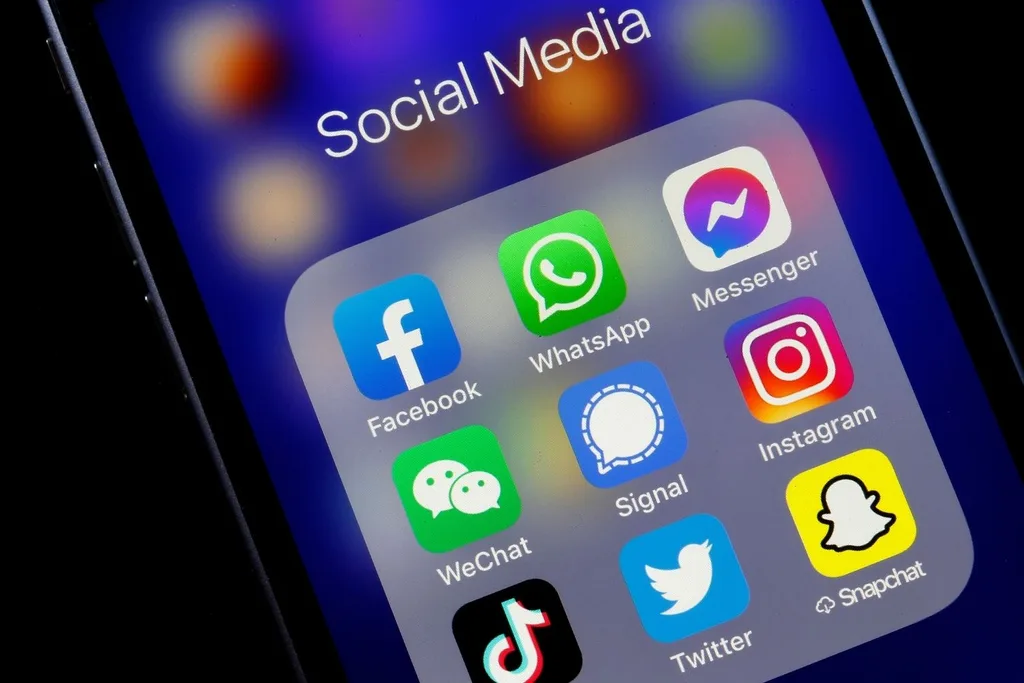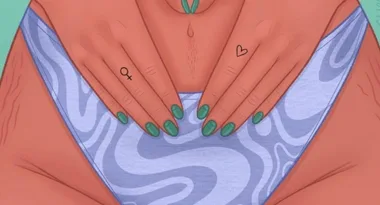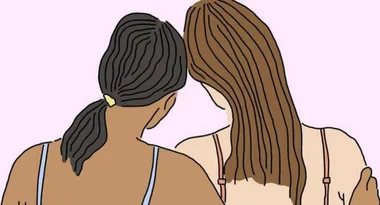This article discusses eating disorders and may be triggering for some readers – If you or someone you know needs assistance with an eating disorder, please call the Butterfly Foundation on 1800 33 4673 or Lifeline on 13 11 14.
Eating disorders are one of the most fatal mental health diseases globally, and TikTok has become a significant trigger for young people.
WATCH: Camila Cabello shares body positivity message on TikTok.
The social media platform is rife with dieting culture, and in the darker crevasses of the site, pro-anorexia, aka pro-ana content, has popped up – such content hasn’t entered the online zeitgeist in such a way since Tumblr’s heyday.
A Guardian investigation into pro-anorexia content found that TikTok which, at the time of August 2021, reached “800 million users,” with almost “half of whom between ages of 16 and 24,” is littered with triggering and potentially life-threatening videos.
For some context into the epidemic of eating disorders in Australia, a Butterfly Foundation report published in 2020 found some eye-opening statistics.
It reports that 4 per cent of the Australian population is affected by eating disorders and that 63 per cent of people with an ED are female.
It’s also a disease that predominantly affects young people, as the average age of “onset for eating disorders is between the ages of 12 and 24 years.”
The Butterfly Foundation is doing incredible work collaborating with TikTok to manage this issue.
Now every time a problematic ED hashtag appears on the app, a link will appear to direct users to their helpline and additional in-app tips.

More recently, Melissa Wilton, the Head of Communications & Engagement at the Butterfly Foundation, said it was “encouraging” to see TikTok “taking proactive steps to ban unsafe and triggering content”.
“It’s a step in the right direction, helping to make the experience on the platform a positive one. A lot more work needs to be done in this space and Butterfly continues to collaborate with social media organisations, including TikTok, to ensure policies are developed to keep people safe online,” she said in a statement.
“Social media, when used correctly, has the potential to create so many positive outcomes – from education and connection to raising awareness and removing stigma around eating disorders and body image issues. We know many lived experience advocates have harnessed the power of social media to share their recovery journeys which has helped countless others.
“Social media isn’t going anywhere, so more needs to be done to increase social media literacy among young people and having safeguards and tools built into these platforms can empower users to better manage and curate their online experience.”
In 2021, Dolly Doctor reached out to the foundation and spoke to communications manager Alex Cowen about how young people can navigate triggering TikToks and why our relationship with social media can be so dangerous.
According to Alex, the reason people are so perceptible to the negative effects from these TikToks is that they amplify society’s obsession with body image.
“Problematic content also often highlights our fixation with the societal notion of ideal body types and promotes extremely unsafe weight loss and/or muscle bulking methods to an often-impressionable young audience,” says Alex.
“For someone experiencing, recovering from or at risk of an eating disorder, exposure to this kind of content can encourage eating disorder thoughts and behaviours.”

Mental health literacy is an excellent way for young people to armour themselves with the tools to identify when they’re experiencing early signs of an eating disorder.
Alex reveals how this intricate mental illness can manifest and how to identify its symptoms.
“Eating disorders are an incredibly complex mental illness… Some personality traits may make an individual more at risk, including perfectionism, obsessive-compulsiveness, neuroticism, and low core self-esteem.
“There is also strong evidence that eating disorders have a genetic basis, particularly with genes relating to food intake, appetite, metabolism and mood. However, the number one modifiable risk factor in developing an eating disorder is dieting and disordered eating,” Alex explains.
TikTok is particularly challenging because its complex and mysterious algorithm makes it hard for people to protect themselves from harmful content.
Alex encourages users to report or block videos they find triggering and to visit the e-safety office’s website, which you can find here.
Another way to navigate the app without feeling negative effects is to understand that its influencers and celebrities aren’t reliable sources of information.

“It can be extremely damaging if young people begin to compare themselves to people, often celebrities or influencers, who represent this ideal, without the understanding that it takes a team of people behind these people to make them look that way or a suite of editing applications.
“Young people must understand that this information is coming from an opinion– not an evidence or reputable base – and this can be harmful, particularly if the information relates to eating, nutrition, and exercise,” says Alex.
To protect yourself from the misinformation rife on TikTok, social media literacy and understanding what an edited image looks like is critical.
“Social media literacy is key for teens in navigating certain platforms and protecting their mental health. We need to teach our young people to have a critical eye on these platforms and be aware of the use of editing, photoshopping, distortion tools and filters,” explains Alex.
However, Alex identifies the educational burden rests on the education system’s shoulders, which needs to provide a better curriculum and resources for young people.
If you need help or support for an eating disorder or body image issue, please call Butterfly’s National Helpline on 1800 334 673 or e-mail support@butterfly.org.au.
Have a question for Dolly Doctor? Drop us an email – dollydoctor@aremedia.com.au








